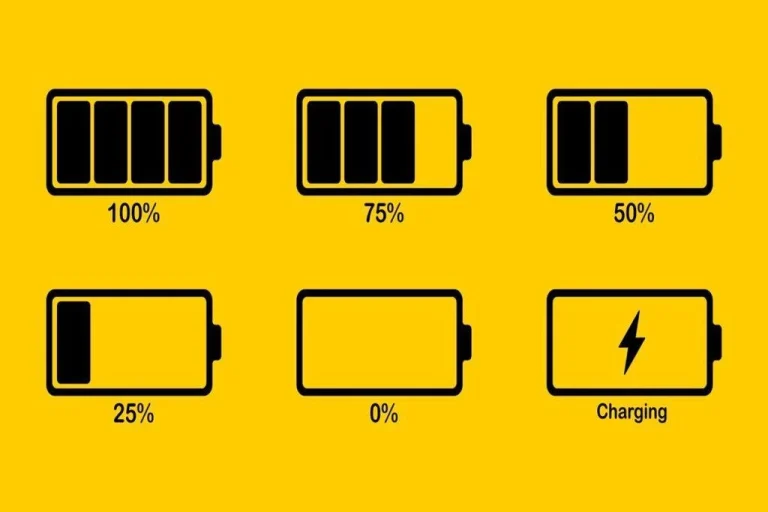Unveiling the Definition of a Mid Handicap Golfer: Exploring the Key Characteristics
.jpg)
Are you a mid handicap golfer looking to improve your game?
We explore the characteristics of mid handicap golfers and how they compare to high handicap players, low handicappers, and scratch golfers.
The importance of choosing the right equipment, key strategies for improvement, and answer common questions about golf handicaps are also discussed. Whether you’re looking to enhance your performance on the golf course or make the transition from mid to low handicap, this article has got you covered.
Key Takeaways:
Understanding Mid Handicap Golfers
Understanding Mid Handicap Golfers delves into the realm of golf handicaps, specifically focusing on male golfers and the nuances of being a mid-handicapper.
Mid-handicappers in golf are individuals with a handicap index that falls in the middle range, typically ranging from around 10 to 20. This means they are competent players who have a good understanding of the game but still face challenges in consistently achieving lower scores. The golf handicap system is crucial for mid-handicappers as it helps level the playing field by adjusting their scores based on the difficulty of the course. Having a handicap index allows mid-handicappers to compete fairly with golfers of varying skill levels, making the game more enjoyable and competitive for all.
Defining Mid Handicap and its Categories
Defining Mid Handicap and its Categories involves understanding the golf handicap system, the characteristics of mid-handicappers, and the various categories within this skill level.
When we talk about mid handicap in golf, we typically refer to players who have a handicap index ranging from around 10 to 19. These golfers are often considered to be at a moderate skill level, possessing a good understanding of the game and displaying consistent play but with room for improvement. Mid-handicappers are known for their ability to hit the ball with decent accuracy and distance, making them competitive on the course.
Characteristics of Mid Handicap Golfers
Mid Handicap Golfers exhibit a unique blend of skills and challenges that differentiate them from high handicap players, low handicappers, and Scratch Golfers.
Mid-handicappers typically have a handicap range of around 10 to 20, indicating a solid level of proficiency yet with room for improvement.
Unlike high handicappers who struggle with consistency and distance, mid-handicappers have decent ball-striking abilities but may face challenges with course management and mental toughness.
On the other hand, when compared to low handicappers and Scratch Golfers, mid-handicappers often lack the precision and shot-making skills required to consistently shoot lower scores.
High Handicap Players vs. Mid Handicappers vs. Low Handicappers vs. Scratch Golfers
High Handicap Players, Mid Handicappers, Low Handicappers, and Scratch Golfers each bring a distinct set of skills, challenges, and aspirations to the golf course based on their abilities and handicap levels.
High Handicap Players typically have the highest handicap index, often above 20. They struggle with consistency in their shots, have limited distance off the tee, and face challenges with course management.
In contrast, Mid Handicappers fall in the range of 10-20 handicap index, showing more consistency in their game and improvement in ball-striking skills.
Low Handicappers, with a handicap index less than 10, exhibit refined shot-making abilities, strong course management skills, and the capability to handle various course conditions effectively.
Scratch Golfers, the elite players with a zero handicap, possess exceptional precision in their shots, advanced understanding of the game, and strategic prowess when navigating challenging course layouts.
Choosing Equipment for Mid Handicap Golfers
Selecting the right equipment is crucial for mid handicap golfers, encompassing choices related to drivers, irons, wedges, putters, and golf balls to enhance their game performance.
In terms of drivers, mid-handicap players should look for forgiveness and distance. A driver with a larger sweet spot can help minimize mishits, and those with adjustable lofts cater to individual swing preferences. Moving on to irons, a set with a balance of forgiveness and control is ideal. Players might benefit from cavity-back irons that offer forgiveness on off-center strikes.
- For wedges, versatility is key. Mid-handicappers can benefit from a wedge with different bounce options for various lies and course conditions.
- Choosing a putter that suits their putting stroke is crucial. A mallet putter with alignment aids can assist in improving accuracy and consistency on the greens.
Selection of Drivers, Irons, Wedges, Putters, and Golf Balls
In terms of selecting equipment for mid handicap golfers, factors such as drivers for distance, forgiving irons, versatile wedges, precise putters, and suitable golf balls play a vital role in enhancing overall performance on the course.
Starting with drivers, mid-handicappers often benefit from a midsize head with a larger sweet spot that can help increase distance without sacrificing forgiveness. For forgiving irons, clubs with a cavity back design are popular choices as they provide a larger area of the clubface that helps in consistent ball striking.
In terms of versatile wedges, mid-handicappers should consider multi-purpose wedges with varying lofts to handle different pitching and chipping scenarios effectively.
Precise putters with alignment aids and adjustable weights are ideal for mid-handicappers to improve their accuracy on the greens.
Choosing golf balls tailored to their swing speed and playing style is crucial for mid-handicappers looking to optimize their overall performance.
Improving from Mid to Low Handicap
Transitioning from a mid handicap to a low handicap requires a strategic approach, consistent practice, and a focus on game improvement to lower scores and elevate performance on the course.
One key strategy for mid-handicappers looking to improve is to set clear goals and create a structured practice routine. By identifying specific areas of weakness, such as putting, driving accuracy, or approach shots, players can tailor their practice sessions to address these shortcomings.
Utilizing game improvement tools like training aids, video analysis, or lessons from a professional coach can provide valuable insights into technique refinement and skill development.
Consistency is paramount in golf, and mid-handicappers can benefit significantly from honing their mental game and course management skills to navigate challenges effectively.
Key Strategies for Improvement
Implementing key strategies for improvement involves honing skills through dedicated practice, focusing on specific aspects of the game, and embracing game improvement techniques to enhance overall performance as a mid handicap golfer.
One effective routine to adopt is practicing consistently on various aspects of your game, including driving, iron play, short game, and putting to achieve a well-rounded skill set. Setting realistic goals and tracking your progress can help maintain motivation and focus on areas that need improvement. Developing mental resilience is crucial; staying present, managing emotions, and visualizing success can positively impact your performance on the course.
- In terms of course management, strategize each shot by considering hazards and distances, playing to your strengths, and making smart decisions based on your skill level.
- Optimizing your equipment is another way to enhance your game; ensure your clubs are fitted properly, use high-quality balls, and explore different technologies to find what works best for your play style.
FAQs About Golf Handicaps
Answering Frequently Asked Questions about Golf Handicaps sheds light on common queries regarding the handicap system, calculating average scores, and understanding the impact of handicaps on gameplay.
One common question is how handicaps are calculated. Handicaps are determined based on a player’s recent scores, factoring in the difficulty of the courses played. Calculating a handicap index involves adjusting scores based on course rating and slope before averaging the differentials to get a player’s handicap index.
Another query often raised is the significance of handicaps in various formats of play. Handicaps are crucial in ensuring fair competition by allowing players of different skill levels to compete on an equal footing. In stroke play, for example, the handicap is used to adjust scores to determine the net winner.
Answering Common Questions about Handicaps
Addressing Common Questions about Handicaps involves clarifying concepts like handicap index calculation, differences between stroke play and match play formats, and the role of handicaps in establishing a level playing field for golfers of varying skill levels.
In stroke play, handicaps are used to level the playing field by adjusting scores based on each player’s handicap index. This ensures fair competition regardless of skill level, allowing golfers of different abilities to compete on an equal footing.
-
Match play, on the other hand, involves a different application of handicaps where strokes are given or received based on the difference in players’ handicap indexes. This adds an element of strategy and competitiveness to the game, as players need to consider how to best utilize their handicaps to win each hole.
Enhancing Performance on the Golf Course
Improving Performance on the Golf Course as a mid-handicapper involves refining skills at the tee box, enhancing shot accuracy, and implementing effective strategies to lower scores and elevate overall gameplay.
When positioning yourself at the tee box, it’s crucial to assess the layout of the hole and choose clubs that suit your strengths. Opting for strategic club selection sets the stage for a successful shot. Focusing on shot accuracy by honing your alignment, grip, and swing mechanics can significantly impact your game. Embracing a strong mental game is equally vital; staying composed, visualizing successful shots, and managing pressure are keys to consistency. Remember, achieving progress as a mid-handicapper requires a blend of skill development and mental fortitude.
Tips for Better Performance as a Mid Handicapper
Providing Tips for Better Performance as a Mid Handicapper involves focusing on mastering game basics, committing to regular practice sessions, and leveraging game improvement irons to enhance shot-making quality and overall gameplay.
One crucial aspect for mid-handicappers to address is the mental aspect of the game. Ensuring a focused and positive mindset can significantly impact results on the course. In addition, incorporating proper course management strategies can help overcome challenges and improve scoring consistency.
Another key factor in improvement is developing a reliable short game. Practicing putting, chipping, and pitching can save valuable strokes during a round. Consistency in these areas can lead to lower scores and increased confidence on the greens.
Honing in on proper posture, grip, and alignment can greatly enhance ball-striking ability. Addressing these fundamentals with diligence can result in more controlled and accurate shots, ultimately improving overall performance on the course.
Frequently Asked Questions
What is a Mid Handicap Golfer?
A mid handicap golfer is someone who falls within a specific range of golfing skill level. This range typically falls between 10 to 19 handicap, with 10 being the lowest and 19 being the highest. This means that the golfer is able to consistently score within this range of strokes over par on a golf course.
How is a Mid Handicap Golfer classified?
A mid handicap golfer is determined by their handicap index, which is a numerical representation of their average scores compared to the course rating and slope rating of a golf course. This index is used to calculate the number of strokes a golfer receives in a round of golf and helps classify their skill level.
Is a Mid Handicap Golfer considered a good golfer?
A mid handicap golfer is considered to have a moderate level of skill in the game of golf. They have a good understanding of the fundamentals and are able to consistently score within a range of 10 to 19 strokes over par. However, their skill level may vary depending on the difficulty of the course they are playing on.
What are some characteristics of a Mid Handicap Golfer?
Mid handicap golfers typically have a decent amount of experience playing golf and have a good understanding of the game. They are able to hit consistent shots and have a good short game. They may struggle with consistency and accuracy on longer shots, but are able to make up for it with their short game.
Can a golfer improve from a Mid Handicap to a Low Handicap?
Yes, it is possible for a mid handicap golfer to improve their skills and move into a lower handicap range. This can be achieved through practice, lessons, and playing on more challenging courses. It may take time and dedication, but with hard work and determination, a golfer can improve their skills and lower their handicap.
Can a golfer with a Mid Handicap compete in tournaments?
Yes, mid handicap golfers are eligible to compete in tournaments and events. Many tournaments have different handicap divisions, allowing golfers of different skill levels to compete against each other. This can be a great opportunity for mid handicap golfers to challenge themselves and improve their skills even further.



